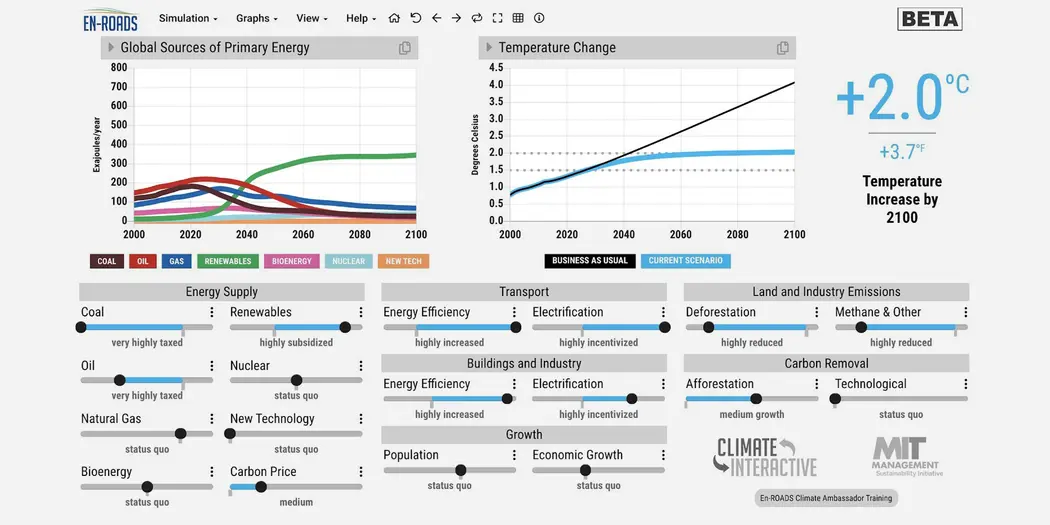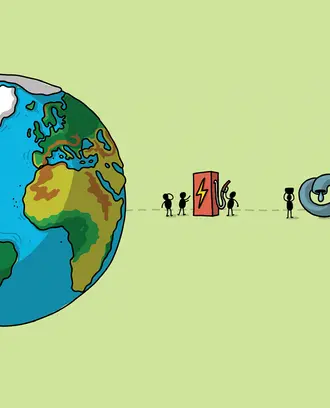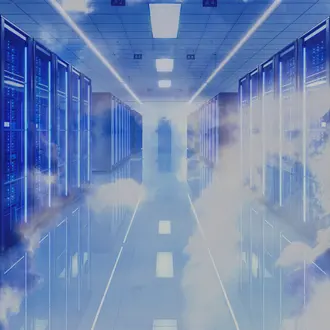Credit: Laura Wentzel
It’s hard to find positives amid the wreckage of COVID-19, but there is one silver lining. The lockdown has slowed climate change: cutting fossil fuel use, air pollution, and greenhouse gas emissions.
How can we retain this COVID-era benefit in a post-pandemic world? MIT Sloan Professor faculty director of the MIT Sloan Sustainability Initiative, explored these issues in a recent webinar, “COVID and Climate Change: Lessons and Opportunities.”
So what do COVID and climate change have in common? Sterman outlined four points:
Out of sight isn’t out of danger
Just as we can’t see a virus until it causes a fever, we can’t see the effects of climate change until it causes extreme weather events. It’s human nature to ignore both issues: Out of sight, out of mind. Gather at the beach without a mask; use fossil fuels. Where’s the immediate harm?
“People can be asymptomatic and infectious, and they can be infectious even before they exhibit any symptoms, and of course there are many asymptomatic cases. And it’s the same story with the climate,” Sterman said.
COVID-19 is more immediately lethal than climate change, of course, but the necessary shift in mindset is similar.
”People have a tough time dealing with complex systems with long time delays,” Sterman said, making behavioral change challenging.
Human behavior responds to emotion, not science
Just as we need a vaccine for COVID-19, climate change requires urgent solutions that can’t wait a generation. But people are moved to modify behavior based on emotion, not on research.
“What the research shows is that just telling people [about] the science doesn’t work. And this has been a problem in the pandemic. You hear scientists telling you what you ought to do, [but] it doesn’t stop people from gathering without masks in close quarters because they don’t get the immediate consequences of that action,” Sterman said.
There is similar amnesia regarding climate change. “The presumption . . . is that the harms from burning carbon today will only show up and hurt our children and our grandchildren. That’s just no longer true,” Sterman said. “Today, we’ve already warmed our climate two degrees Fahrenheit approximately above preindustrial levels,” leading to extreme weather events such as droughts and flooding.
Thinking that those effects aren’t yet here is “a myth,” Sterman said.
To be moved to change, he said, the public needs to be able to visualize the science, which is why Sterman and his colleagues created the EN-ROADS climate-solution simulation. The free online tool allows users to see how various behavioral adaptations affect climate change.
Such simulations help humans comprehend both the urgency of the problem and the concrete steps to solve it. “It’s that emotional response that our studies showed drive people’s actions in the real world to get politically engaged” — on climate as well as on COVID-19, Sterman said.
The En-ROADS climate simulator allows users to create their own climate scenarios and view the results.
Try the simulatorStop thinking “growth versus green”
Just as the debate over when to reopen the economy should not be presented as a choice between lives lost or jobs saved, climate action is not inherently in conflict with economic growth. With COVID-19 as with climate change, science is the solution, Sterman said.
“It’s totally unacceptable to harm the economy in order to cut our carbon emissions. What we have to do is find a way to do both: to preserve a healthy, prosperous economy with opportunity for everybody, while we cut our carbon emissions,” Sterman said.
Right now, emissions have been cut — in the first half of April, global CO2 emissions fell by 17% percent due to COVID-related closures — but those reductions come at the economy’s expense.
These vast benefits aren’t sustainable in the long term, he said: “There needs to be fundamental alignment between a healthy environment, a healthy society, and a healthy economy.”
Fortunately, just as we need to take collective action on COVID-19 to reap collective health benefits, cutting emissions offers collective economic benefits, too — specifically, replacing the energy coming from harmful sources with solar, wind, storage, and geothermal.
“Replacing the energy services that we need with clean, renewable energy, with energy efficiency, creates jobs — everywhere in the world, including in every state, red and blue,” Sterman said.
Global action is essential
Put on a mask, and save someone’s life. Change your environmental behavior now, and reap the benefits later.
“You can’t solve the problem of flattening the curve and quenching the pandemic just by individual action,” Sterman said. “When you choose to distance yourself socially, when you support school closures, business closures, sporting event closures, et cetera, you’re not just protecting yourself, you’re protecting other people.”
The same holds true with climate change. Both are global, common threats that require a common, global solution.
“The WHO estimates that air pollution is causing the premature deaths of about 7 million people every year,” Sterman said. “And many of those deaths occur in this country. It’s not just something that happens in Delhi and Shanghai and Jakarta. There’s not going to be anywhere to hide, no matter how affluent you are.”




